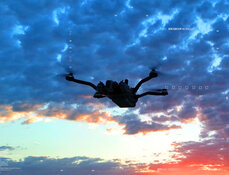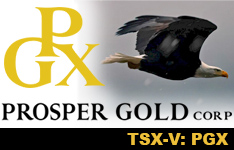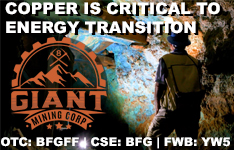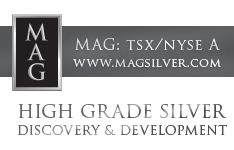DroneShield Ltd. (DRO:ASX; DRSHF:OTC) has announced the launch of its UAS Incident platform, a data-driven tool providing real-time intelligence on global drone-related incidents. The platform aggregates open-source data, enabling customers to monitor and analyze drone activities by sector, region, and impact. Designed to enhance situational awareness, the platform is available via DroneShield's Customer Portal and complements the company's broader suite of counter-drone technologies.
Oleg Vornik, CEO and Managing Director of DroneShield, stated in the company release, "Our new UAS Incident platform is a game-changer for both our military and civilian customers alike." He added, "With drone incidents on the rise globally, access to timely and relevant data is critical for organizations to enhance their security posture and stay ahead of potential drone threats."
In tandem with this launch, DroneShield also unveiled a significant upgrade to its DroneSentry counter-unmanned aircraft system (C-UAS) technology at the Avalon Australian International Airshow 2025. The expanded solution includes new integrations with high-performance radar and optical sensor partners such as RADA, FLIR, Echodyne, and Bosch. These improvements are designed to increase detection range and accuracy across a variety of environments and operational needs, supported by DroneShield's SensorFusionAI and DroneSentry-C2 software.
The new tools aim to provide military, government, and civilian customers with enhanced capacity to detect, track, and respond to aerial threats. "Avalon 2025 is the perfect platform to showcase how homegrown innovation is redefining security on a global scale," said Vornik in that announcement.
DroneShield continues to experience growth across its business. According to the company's 2024 annual results, revenue reached a record AU$57.5 million, up from AU$54.1 million in 2023. Software-as-a-Service (SaaS) revenue doubled to AU$2.8 million in 2024. As of February 18, DroneShield reported a cash balance of AU$215.2 million with no debt, following a capital raise of approximately AU$235 million in 2024 to scale its operations. The company also reported a defined sales pipeline valued at AU$1.2 billion, which includes global opportunities in the defense, public safety, and infrastructure sectors.
Flying Through The Aerospace and Defense Sector
The aerospace and defense sector reported strong revenue growth in 2023, driven by increased demand for both commercial aircraft and defense technologies. According to PwC's Global Aerospace and Defense: Annual Industry Performance and Outlook report, overall industry revenue reached a record US$829 billion, up 11% from 2022. Operating profit also increased to US$73 billion, marking a 10% improvement over the previous year, although still below the pre-pandemic high.
Passenger aviation played a major role in the commercial segment's rebound. PwC stated that "2023 was a year of continuing surge in demand for passenger (PAX) aviation," noting that domestic travel surpassed pre-pandemic levels by 4%, and international travel recovered to 89%. Industry-wide aircraft orders totaled 3,670 in 2023 — nearly three times the number of deliveries — pushing the backlog beyond 14,000 units.
Independent investor Chase Barlow described DroneShield Ltd. as a compelling entry point into the counter-drone (C-UAS) market,
The defense segment also saw heightened activity. According to PwC, "the defense sector is experiencing significant increases in demand amid increased global tensions and partly due to the wars in Ukraine and the Middle East."
This led to a record backlog of US$747 billion among the top defense companies. However, profitability remained mixed. While European firms reported a 22% increase in profits, major U.S. defense companies faced production challenges, inflation, and labor constraints. "Only L3Harris reported an overall profit and operating margin improvement," the report added.
In a separate January analysis for Forbes, Frank Holmes highlighted that "U.S. defense spending [was] leading the world" and emphasized that companies specializing in cybersecurity, advanced communications, and aerospace innovation were capturing a larger share of the sector's revenue. According to Holmes, "Northrop Grumman is at the forefront of aerospace and defense innovation," with key programs like the B-21 Raider stealth bomber and space systems supporting its US$35.2 billion in defense revenue.
According to MSN on March 18, Ukraine's use of unmanned ground and aerial drones in a December assault near Kharkiv marked a new phase in modern warfare, demonstrating large-scale coordination of land- and air-based robotics. The operation, carried out by Ukraine's 13th National Guard Brigade Khartiya, involved about 50 drones and was seen as a proof of concept for future missions. Despite signal interference and terrain challenges, the mission drew international attention, with governments and defense companies viewing it as a sign of how modern conflicts may increasingly rely on unmanned systems. A Ukrainian lieutenant called the effort "the first step of the new war," while the Dutch defense minister said the brigade's operations resembled "a tech startup, but operating from a shelter." The mission highlighted the growing role of drones in battlefield innovation and has accelerated global experimentation with unmanned ground vehicles (UGVs) and drone-swarming technologies.
DroneShield's Roadmap for Growth and Innovation
As noted in the company's investor presentation, DroneShield's 2025 strategy focuses on accelerating the development and deployment of next-generation counter-unmanned systems (C-UxS), underpinned by proprietary AI-driven software.
According to its February 2025 investor presentation, the company is directing investment into enhanced product capabilities such as the RfPatrol Mk3, DroneGun Mk5, and NextGen DroneSentry-C2. These products are designed to offer increased automation and intelligence, which DroneShield expects will enable broader adoption and higher gross margins through subscription-based pricing models.
Shaw and Partners analyst Abraham Akra reiterated a Buy rating on DroneShield, maintaining a price target of AU$0.90.
The company is also targeting new sectors with the development of marine-based C-UxS systems and integrated vehicle-mounted multi-sensor solutions. With 204 engineers among a total headcount of 275 — expected to grow to 330 by mid-2025 — DroneShield is expanding its Sydney manufacturing facility to support up to US$500 million in annual production capacity.
Geopolitical trends are further bolstering demand for counter-drone solutions. DroneShield has secured contracts with the US Department of Defense, won a NATO Framework Agreement in April 2024, and is engaged in several large-scale defense procurement processes, including the Australian LAND156 program. The company is registered under the AUKUS export framework, positioning it to supply Western allied forces amid rising global tensions and increased drone usage in military and civilian applications.
DroneShield's global sales efforts are supported by on-the-ground teams in the US, Europe, Mexico, and the UAE. Its diversified pipeline includes significant opportunities in Asia, North America, and Latin America, with its largest potential project valued at US$228 million. The company's transition toward SaaS-based solutions, supported by a maturing product roadmap and proprietary AI technology, remains a key element of its long-term growth plan.
Analysts Highlight DroneShield's Position as a Key Player in the Counter-Drone Sector
In a February 14 contributor opinion, independent investor Chase Barlow described DroneShield Ltd. as a compelling entry point into the counter-drone (C-UAS) market, citing the company's strong position in both military and commercial applications. Barlow emphasized DroneShield's unique integration of signal-jamming and neutralization technologies as central to its role in defending against unauthorized drone activity, particularly across military and critical infrastructure. He pointed to the company's sharp uptick in revenue and profitability in 2023, noting that despite temporary share price pressure following an equity raise, DroneShield ended FY24 with a strong cash position of approximately AU$220 million.
That financial buffer, combined with AU$200 million in inventory and the near-completion of its Sydney facility expansion, which will support up to AU$500 million (US$317 million) in annual production capacity, gives the company significant flexibility to meet growing global demand. Barlow valued DroneShield shares at US$1.60, using a 25x EV/EBITDA multiple on projected FY26 earnings, aligning it with other major defense firms. He also cited the company's NATO framework agreement, a AU$11.8 million contract in the Asia-Pacific region, and potential involvement in Australia's AU$300–500 million Project LAND 156 as major catalysts for growth.
On February 26, Shaw and Partners analyst Abraham Akra reiterated a Buy rating on DroneShield, maintaining a price target of AU$0.90. Akra pointed to improved revenue visibility and a strong global sales pipeline as drivers of confidence.
DroneShield's FY24 annual report showed committed revenue for FY25 had climbed to AU$52 million as of February 2025, up from AU$45 million just a month earlier.
 Streetwise Ownership Overview*
Streetwise Ownership Overview*
DroneShield Ltd. (DRO:ASX; DRSHF:OTC)
While 2024 growth was somewhat affected by procurement delays, the company built a record AU$1.2 billion sales pipeline, with notable traction in Europe and Australia. Recent contract wins included AU$9.7 million in Latin America, AU$8.2 million through NATO, and AU$11.8 million across the Asia-Pacific, reflecting DroneShield's expanding global reach. Analysts also pointed to the company's blend of proprietary hardware and software as a potential differentiator in its bid for Project LAND 156 and its broader role in advancing Australia's sovereign defense capabilities.
Ownership and Share Structure
Recent filings reveal that Vanguard Group has become a substantial shareholder in the company, holding a 5.47% stake. Regal Funds Management has 8.31%. JP Morgan Chase holds 6.34%.
This development adds to the company's strategic investors, which currently hold over 11% of the company's stock.
5.68% is with management and insiders, according to the company's most recent investor presentation.
Structurally, DroneShield has 872.12M outstanding shares and 782.40M free float traded shares.
Its market cap is reported as approximately AU$1Bn. Its 52-week range is AU$0.5850−2.72 per share.
| Want to be the first to know about interesting Technology and Special Situations investment ideas? Sign up to receive the FREE Streetwise Reports' newsletter. | Subscribe |
Important Disclosures:
- As of the date of this article, officers and/or employees of Streetwise Reports LLC (including members of their household) own securities of DroneShield Ltd.
- James Guttman wrote this article for Streetwise Reports LLC and provides services to Streetwise Reports as an independent contractor.
- This article does not constitute investment advice and is not a solicitation for any investment. Streetwise Reports does not render general or specific investment advice and the information on Streetwise Reports should not be considered a recommendation to buy or sell any security. Each reader is encouraged to consult with his or her personal financial adviser and perform their own comprehensive investment research. By opening this page, each reader accepts and agrees to Streetwise Reports' terms of use and full legal disclaimer. Streetwise Reports does not endorse or recommend the business, products, services or securities of any company.
For additional disclosures, please click here.









































